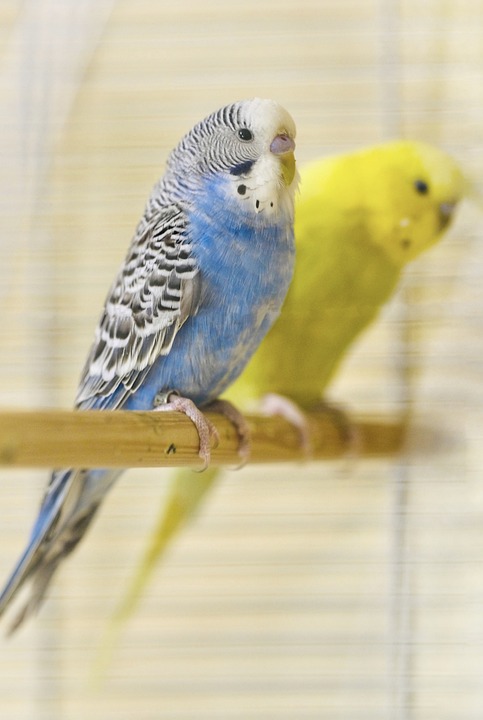Parrots have long been admired for their vibrant plumage and ability to mimic human speech. However, their talent doesn’t stop there. These intelligent creatures have also been known to mimic electronic sounds, captivating both bird enthusiasts and researchers alike. In this article, we will delve into the intriguing world of parrot behavior, focusing specifically on their mimicry of electronic sounds.
Understanding Parrot Mimicry:
Mimicry is an instinctive behavior in parrots, allowing them to imitate sounds they hear in their environment. This ability is not limited to human speech but extends to a wide range of sounds, including electronic noises. Parrots have a unique talent for vocal learning, which plays a crucial role in their mimicry abilities. Unlike most other birds, parrots have a specialized vocal apparatus that allows them to produce a diverse range of sounds, making them particularly adept at mimicking electronic noises.
The Science Behind Parrot Mimicry of Electronic Sounds:
The ability of parrots to mimic electronic sounds is rooted in their vocal apparatus and the neural mechanisms involved. Parrots have a highly flexible vocal tract, allowing them to modify their vocalizations to replicate a variety of sounds. Additionally, their brain structures, specifically the regions responsible for auditory processing and vocal production, are well-developed and highly adaptable. This combination of physical and neural characteristics enables parrots to learn and reproduce complex electronic sounds.
Factors Influencing Parrot Mimicry of Electronic Sounds:
Several factors influence parrot mimicry of electronic sounds. Environmental influences play a significant role, as parrots are more likely to mimic sounds they frequently hear in their surroundings. Social learning also plays a crucial role, as parrots learn from each other and imitate sounds that are reinforced by their flock members. Emotional and cognitive factors, such as the parrot’s mood and level of engagement, can also affect their mimicry abilities.
The Benefits of Parrot Mimicry of Electronic Sounds:
The ability of parrots to mimic electronic sounds has several benefits. Firstly, it enhances communication and bonding between parrots and their human caregivers. Mimicking electronic sounds, such as phone ringtones or alarm sounds, allows parrots to alert their owners and establish a unique form of communication. Secondly, mimicry provides cognitive stimulation and mental well-being for parrots, keeping their minds active and engaged. Finally, the mimicry of electronic sounds has potential applications in research and conservation efforts, enabling scientists to study the auditory capabilities and cognitive abilities of parrots.
Frequently Asked Questions (FAQs):
1. Can all parrot species mimic electronic sounds?
While most parrot species have the ability to mimic sounds, the extent to which they can mimic electronic sounds may vary. Some species, such as African Grey parrots, are known for their exceptional mimicry skills.
2. How can I encourage my parrot to mimic specific electronic sounds?
Exposing your parrot to the specific electronic sounds you want them to mimic, such as playing recordings or frequently using electronic devices with distinct sounds, can encourage them to imitate those sounds.
3. Is there a limit to the number of sounds a parrot can mimic?
Parrots have a remarkable capacity for mimicry, and there is no set limit to the number of sounds they can mimic. However, individual parrots may have their own limitations based on their vocal range and ability to reproduce certain sounds accurately.
4. Can parrots understand the meaning of the sounds they mimic?
Parrots primarily mimic sounds for social and attention-seeking purposes, rather than understanding their meaning. However, they can associate certain sounds with specific actions or events through reinforcement and conditioning.
5. Are there any negative effects of parrot mimicry of electronic sounds?
While parrot mimicry of electronic sounds is generally harmless, excessive exposure to loud and repetitive electronic noises can be stressful for parrots. It is important to ensure a balanced and enriching environment for their well-being.
Conclusion:
Parrot behavior never ceases to amaze us, especially when it comes to their mimicry abilities. The way they effortlessly imitate electronic sounds showcases their remarkable cognitive skills and adaptability. By understanding the science behind parrot mimicry and exploring its various aspects, we can deepen our appreciation for these incredible creatures and further enhance our interactions with them. So, next time you hear your parrot mimicking the sound of your phone ringing, take a moment to marvel at the wonders of nature and the fascinating world of parrot behavior.









